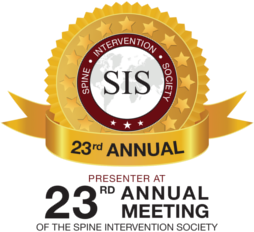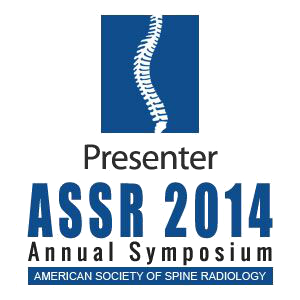Have you ever experienced a shooting pain in your hip and an unusual tingling feeling that runs down your leg? In that case, this disruptive experience, commonly an indicator of a pinched nerve in the hip, is a major medical condition that impacts many individuals.
Indeed, statistics indicate that about 85 in every 100,000 adults struggle with this condition at one time in their lives and make everyday movements a cause of fear. The pain may be a mere inconvenience or a disabling condition that impairs your quality of life. This guide explains this condition, its causes and symptoms, and most importantly, how to find permanent relief.
What Is a Pinched Hip Nerve?
When you hear the phrase "pinched nerve," you hear a layman's term used to describe a medical phenomenon called nerve compression or nerve entrapment. This happens when a nerve is compressed or subjected to undue pressure by the surrounding tissues, consisting of bone, ligaments, tendons, or muscle. This compression interferes with the nerve's normal functioning, causing the painful and strange sensations you feel.
The sciatic nerve is the most commonly involved in the context of the hip. It is the longest and thickest nerve in your body, starting with five nerve roots in your lower back or lumbar spine. It then goes deep into the buttocks and down the back of both legs. Compression of the roots of the sciatic nerve around the spine results in a particular group of symptoms called lumbar radiculopathy, also referred to colloquially as sciatica.
Nevertheless, it is a fatal error to think that any nerve pain in the hip is sciatica. Other large nerves in your complex hip and pelvic area may also get compressed. The nerve that can be entrapped is the femoral nerve, which runs down the front of your thigh and can result in groin and anterior hip pain.
The pudendal nerve may cause buttock and perineal pain deep in the pelvis. Lastly, the lateral femoral cutaneous nerve, which supplies the outer thigh can be compressed, leading to a condition known as Meralgia paresthetica, which is associated with burning and numbness on the surface of the thigh. The first step in the effective treatment is identifying the nerve affected.
Causes of a Pinched Nerve in Your Hip
Knowing why a nerve in your hip has been compressed is central to avoiding its recurrence. The reasons are diverse and can be divided into several categories.
Degenerative Conditions
One of the leading causes of nerve compression is the natural aging process and the body's wear and tear, commonly known as degenerative conditions. Degenerative disc disease is a process by which, as you age, the soft, cushion-like discs that separate your vertebrae may lose height and water content.
This may lead to the vertebrae being moved together, thus narrowing the exits of the nerves out of the spinal column. Sometimes, these discs may bulge or herniate, in which the softer inner material protrudes and presses directly on a nerve root.
To counter this instability, your body can develop bone spurs and bony growths that further compress the nerves. Conditions such as osteoarthritis and spinal stenosis, or narrowing of the spinal canal, are included in this degenerative category.
Biomechanical and Lifestyle Factors
Being overweight is a significant factor; every pound you are overweight exerts significantly more pressure on your joints and spine, which can increase the rate of degeneration and directly increase the pressure on nerves.
Similarly, a sedentary lifestyle or a job that requires sitting in one position can lead to tightening of hip and pelvis muscles, especially the piriformis muscle, which compresses the sciatic nerve. Inflammation and overuse injuries caused by repetitive motions during sports activities or work may cause nerve entrapment.
Acute Injuries and Other Health Conditions
An injury like a hip fracture, a hip joint dislocation, or even internal bleeding in the pelvic region may push tissues aside and exert direct pressure on a nerve. Temporary sciatica is also well-known to be caused by the significant anatomical and weight changes that happen during pregnancy. Less frequently, other health conditions like tumors, cysts, or infections may develop in a manner that causes nerve root compression.
Symptoms of Pinched Nerve
The messages your body conveys when a nerve is compressed are unique and tend to have a pattern. The exact site of your symptoms may be of good help in identifying which nerve is involved.
Pain
Pain localized to the back of your hip and buttock tends to indicate a problem with the sciatic or pudendal nerve. On the other hand, when the pain is more in the front of your hip and groin area, it points to possible compression of the femoral or obturator nerve.
You must be watchful of a set of typical symptoms. A sharp, searing, burning pain that appears to start deep in the hip or groin is one of the most common. This is usually not the same as a mere muscle ache; most people report it as an electric shock. A continuous dull ache may also follow this sudden sharp pain in the hips and buttocks.
Abnormal Sensations
The most common sign of nerve irritation is a tingling sensation, sometimes called pins and needles. This tingling can be accompanied by some or all numbness in the hip or the regions down your leg fed by that nerve. It can seem like you have fallen asleep with your leg, even when moving.
Muscle Weakness
You may have trouble walking or lifting your leg or foot, or you may experience that your knee is unstable and buckles at any time. This indicates that the capacity of the nerve to transmit messages to your muscles is being impaired, and this is a clear indication that you need to seek medical assessment.
Getting the Right Diagnosis
Although mild nerve irritation can clear up on its own, you should see a doctor if your pain is severe, lasts longer than a few weeks, or is accompanied by growing numbness or muscle weakness. The most important step to treatment is an accurate diagnosis.
Your visit will start with a thorough review of your medical history and physical examination. Your physician will ask specific questions regarding the character of your pain, its direction, and what activities aggravate or alleviate it. The physical examination will entail several essential tests.
Your physician will examine the power of your muscles, reflexes, and sensitivity to touch in various areas of your legs and feet. They will likely make you do specific movements like a straight-leg raise to determine which positions make your symptoms come on, which will help determine which nerve root is affected.
If the physical examination indicates the possibility of nerve compression, your physician might request imaging procedures to better understand what is happening in your body. An X-ray is usually a starting point to check the alignment of your bones and eliminate the possibility of having a fracture or severe arthritis.
The gold standard for visualizing soft tissues is a magnetic resonance imaging (MRI) scan. A herniated disc, spinal stenosis, or other soft tissue issues that may be causing a nerve to be compressed can be demonstrated with an MRI.
Your doctor may order electrodiagnostic tests to verify the diagnosis and determine the degree of nerve damage in some cases. These are a nerve conduction study (NCS) that defines the speed of the electrical impulse in your nerves and an electromyography (EMG) that assesses the electrical activity of your muscles. EMG is especially useful in establishing whether the symptoms are due to pressure on a spinal nerve root and may enable the precise identification of the affected nerve.
A Step-by-Step Plan for Treatment Relief
As soon as you have a diagnosis, you can initiate a systematic process of reducing pressure on the nerve and eliminating your pain. This plan should be implemented in stages, with the first stage being the immediate care and the second stage being advanced interventions in case of necessity.
Immediate Home Care
The initial phase starts at home with conservative treatment to decrease acute inflammation and pain. The best thing is to rest from the particular activities that worsen your pain. This does not imply that the patient should be in bed; on the contrary, the patient is advised to move gently. The strategy of alternating cold and heat therapies should be used. During the initial 48-72 hours, an ice pack (wrapped in a towel) should be applied to the painful site 15-20 minutes at a time to help decrease inflammation.
Once this initial phase is over, a heating pad can loosen up tight muscles and circulate more blood to the area. Nonsteroidal anti-inflammatory drugs (NSAIDs) such as ibuprofen or naproxen, taken over the counter may also help with pain and swelling. However, you should never take any new medication without consulting your doctor.
Gentle Stretching and Exercises
The second and most crucial stage of self-care is active motion via specific exercises and stretches. This is aimed at relieving the muscle tension and building the core muscles that hold your spine and pelvis. One of the most common causes of sciatic nerve compression is the tight piriformis muscle deep in the buttocks.
To stretch it, lie down on your back with knees bent and feet flat on the floor. Bring the ankle of your affected leg over the knee of the opposite leg. Next, take hold of the thigh of the lower leg and pull it towards your chest until you feel a stretch in your buttock. Keep this for at least 30 seconds.
Strengthening your glutes and core is also essential to help you be stable in the long run. The glute bridge is a great exercise to do. Lie down on your back, knees bent, feet on the floor, and arms at your sides. Contracting your glutes and abdominals, raise your hips off the ground until your body is straight between your shoulders and knees.
Stay in this position for a few seconds, then slowly lower your hips. Core strength also has its basis in the plank exercise. Place your body on your forearms and toes with your back straight and your body in a straight line from your head to your heels. Hold as long as you can keep proper form.
Professional Non-Surgical Treatments
In case of insufficient relief with at-home care and exercises, it is time to consult a professional and get non-surgical treatment. The first thing you should consider is physical therapy. A competent physical therapist will create an individualized stretching and exercise program addressing your condition. They can also use practical methods, called manual therapy, to move your joints and soft tissues.
Active Release Technique (ART) is one of the most effective special techniques. ART is a movement-based massage therapy in which the therapist applies deep, directed tension to the scar tissue or adhesions as you move the affected area through a specific range of motion. This mixture assists in dissolving the limitations and releasing the trapped nerve.
Additional career choices are chiropractic care, where the spine is adjusted to relieve pressure and improve alignment, and acupuncture, which some research indicates can be used to alleviate pain. When the inflammation is severe, your doctor might suggest a corticosteroid injection, which will administer an extremely potent anti-inflammatory drug directly to the origin of the nerve compression and give you a lot of pain relief, although the relief may be temporary.
Surgical Intervention
Surgery is the last resort and is usually only used when you have severe pain that has not been relieved by months of conservative care or when you are having progressive neurological symptoms such as severe muscle weakness. A microdiscectomy is the most popular operation for a herniated disc.
During this minimally invasive surgery, the surgeon will make a small incision. With the help of a microscope, they will only remove the part of the herniated disc that is causing pressure on the nerve, leave the rest of the disc intact, and maintain the spine's stability.
The Long-Term Prevention and the Road to Recovery
The journey of recovery is a process that needs both time and action. The recovery period of a pinched nerve is highly dependent on the magnitude of the compression and its cause. Most mild cases of nerve irritation will start to heal in a couple of days and can heal completely in four to six weeks with conscientious home treatment.
Greater compression, particularly due to pathologies such as spinal stenosis, can require several months to recover. Good indicators that your nerve is recovering are that you will notice a significant reduction in the level of pain, a decrease in the size or frequency of numbness and tingling, and that you will gradually regain muscle strength and range of motion.
Habits for Long-Term Recovery and Prevention
Real recovery cannot be reduced to treating the existing injury; it prevents the same injury from occurring. You can embrace many habits to reduce your chances of future flare-ups significantly.
-
Maintain a Healthy Weight. The most important thing is to keep a healthy weight, which directly decreases the daily burden and pressure on your spinal discs and joints.
-
Exercise Regularly. Exercising regularly, including core-strength training and hip-muscle flexibility, is vital.
-
Practice Good Posture. You also need to take care of your posture, particularly when sitting. Have regular breaks to stand up and stretch. Lastly, proper lifting mechanics should always be used.
-
Use Proper Lifting Techniques. When lifting a heavy object, bend your knees and hips, straighten your back, and use your strong leg muscles, not your back.
Frequently Asked Questions (FAQs)
What leads to a pinched nerve in the hip?
A pinched nerve in the hip results from too much pressure on a nerve by other tissues. The most frequent causes are herniated discs in the lower back, degenerative changes such as bone spurs due to arthritis, spinal stenosis, piriformis muscle tightness, and lifestyle-related factors such as obesity or sitting.
What are the symptoms of a pinched nerve in the hip?
The symptoms are a sharp, burning, or aching pain in the hip, buttock, or groin. This discomfort usually spreads down the leg and can be accompanied by tingling, numbness, or the feeling that your leg has fallen asleep. You can also feel weak in the affected leg.
Does walking help a pinched nerve in the hip?
This is dependent on the severity. In mild cases, low-impact, gentle walking may help because it enhances blood circulation and avoids stiffness. Nevertheless, walking can increase the pain during an acute, severe flare-up. You must take a break from aggravating activities, concentrate on light stretches, and slowly resume walking.
What is the recovery time of a pinched nerve in the hip?
Most mild to moderate pinched nerves recover in a four-to-six-week period with regular conservative treatment such as rest, stretching, and anti-inflammatory drugs. Severe cases that are the result of severe compression may take months to resolve, and some may need medical assistance to resolve completely.
Find a Neurointerventional Surgeon Near Me
It can be overwhelming to live with the pain and restrictions of a pinched nerve in your hip. But the good news is that there are effective treatment options. Home remedies and exercises can be helpful in the short term, but in many cases, only a medical professional can help a person recover permanently.
An experienced spine surgeon can diagnose the underlying cause of your nerve compression and develop a treatment plan that will meet your specific needs and lifestyle.
Our trained spine experts at LAMIS are committed to assisting patients in moving again, alleviating pain, and recovering their quality of life in Los Angeles. Take the first step to permanent relief today. To make an appointment with a qualified neurointerventional surgeon in your area, call LAMIS at 310-734-6088.






